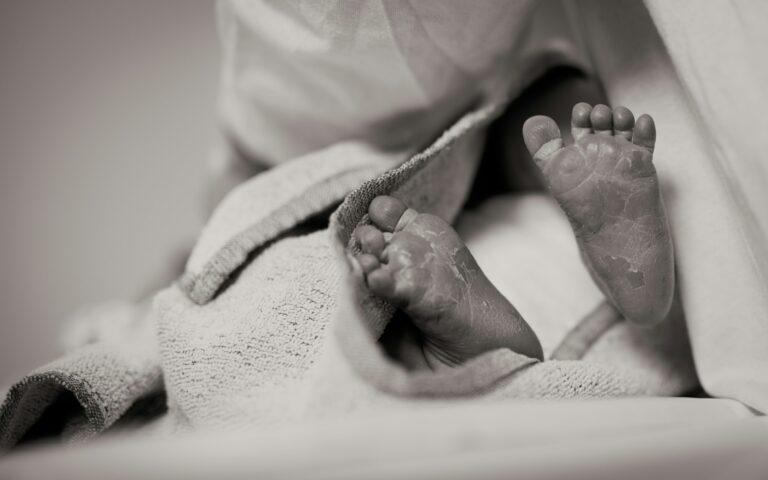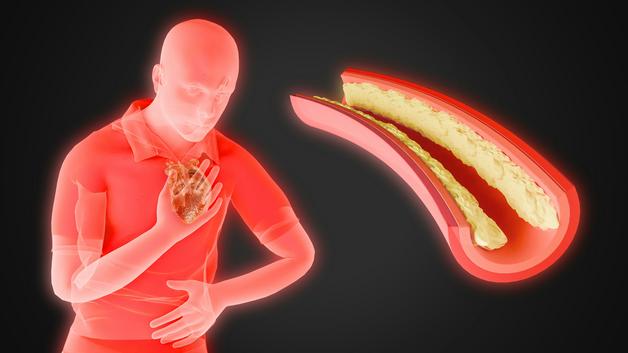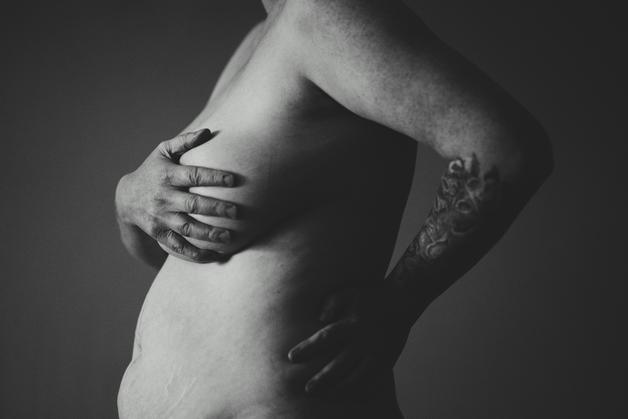Navigating pregnancy can often feel like a journey of both unexpected joys and sudden physical mysteries, and hip pain during pregnancy ranks among the most frequent and unsettling surprises that await expectant parents. Imagine planning for the tiny socks and gentle kicks, only to be met with a sharp twinge rolling through your hips when getting out of bed, or a persistent ache radiating as you try to find a comfortable sleeping position. Hip discomfort isn’t just an isolated sensation—it can ripple through daily life, nudging sleep aside, challenging your ability to walk, climb stairs, or even stand for a few moments. Why does hip pain seem to choose this precise moment of transformation to make its entrance? Are there truly effective remedies that can soothe or prevent it? From understanding the mosaic of hormonal changes, anatomical shifts, to piecing together everyday approaches and medical explanations, your journey through hip pain during pregnancy can transform from a source of anxiety to one of knowledge and reassurance. Explore how to recognize it, why it happens, how to protect your comfort, and which solutions are backed by medical insight and the lived experience of countless parents.
Why hip pain during pregnancy happens and who gets affected
You might wonder: why now, why the hips? The truth is, hip pain during pregnancy is no rare visitor, sometimes appearing as early as the second trimester, intensifying with every passing week. Scientific data indicate this affects as many as 20% to 50% of pregnant women. While no social or age group is spared, those in their first pregnancy, carrying extra body weight, or engaging in work that strains the body often find themselves more at risk.
Medically, it’s both simple and stunning. The hormone relaxin—essential for preparing the pelvis for childbirth—starts working like an invisible architect, softening the ligaments that keep your hip joints stable. Add the growing uterus, weight gain, and a posture altered by your shifting centre of gravity, and the result can be an ache or sharp pang each time you move. Sometimes it’s bilateral, sometimes just one side, sometimes a dull ache that grumbles quietly and sometimes a stabbing sensation that refuses to go unnoticed.
Causes and scientific triggers behind hip pain during pregnancy
The science is layered—and fascinating! Several mechanisms contribute to hip pain during pregnancy:
- Round ligament pain: As the uterus stretches, ligaments elongate, causing sudden, sharp twinges especially during a quick turn or when standing up.
- Pelvic girdle pain (PGP) and symphysis pubis dysfunction (SPD): Increased movement in pelvic joints, brought on by relaxin, translates into deep, sometimes poorly localized pain around the hips or lower back.
- Sciatica: The growing uterus may press against the major sciatic nerve, sending shooting pains down the lower back through the hip and into your leg.
- Iliotibial band syndrome: When the connective tissue from your hip to knee becomes tight, outer hip pain is the result.
- Muscle fatigue and cramps: Overworked by postural changes and extra weight, hip muscles might contract suddenly, causing throbbing pain.
- Past injuries: Any prior trauma or weakness erupts more easily under these new physiological strains.
- Lifestyle factors: Prolonged sitting, inactivity, muscular weakness, or certain repetitive movements can be the silent architects of discomfort.
Many wonder, “If my hips hurt, should I worry?” Usually, these pains mirror the extraordinary adaptations your body makes to nurture a growing life—but persistent or unusual symptoms always deserve attention.
When hip pain appears and what it feels like
Most commonly, hip pain during pregnancy starts sneaking in during the second trimester, swelling in intensity as pregnancy moves forward. Its presentation varies: a persistent dull ache in the outer hip, a sudden shooting pain spiralling down the thigh, or even a blocky stiffness in the morning. Is there discomfort when getting out of a chair, turning at night, or standing up after resting? These are tell-tale patterns. Sometimes, pain radiates to the groin, buttocks, or lower back—a clue that nerves or deeper structures might be nudged by the changes happening inside.
After a long day or following inactivity, you might find the hips particularly reluctant to support you. It’s not just discomfort; for some, it’s an obstacle to daily activities, and for others, a near-constant companion in the third trimester.
Recognizing the symptoms: a map of hip pain during pregnancy
The spectrum of symptoms includes:
- Sharp stabbing pain: Often catches you off guard—rolling over in bed, standing from a chair, or performing daily chores.
- Lingering, deep ache: Sometimes in the hips, sometimes radiating to buttocks, lower back, or thighs—never fully letting you forget.
- Pain radiating down the leg: Nerve compression, like sciatica, signals with tingling or numbness.
- Stiffness and instability: After resting or on waking, hips may feel jammed or shaky.
- Rare swelling: Points to inflammation if present, but is less common.
If pain disturbs your ability to walk, climb stairs, or rest, or is paired with redness, swelling, or fever, it should prompt a medical consultation.
Factors that raise the risk
Several risk factors make hip pain more likely:
- Prior hip or pelvic issues: Chronic pain or old injuries resurface more easily.
- Joint hypermobility: Genetics or history of multiple pregnancies make joints looser.
- Lifestyle patterns: Inactivity, poor posture, or repetitive heavy lifting.
- Underlying conditions: Pre-existing arthritis, sciatica, or prior trauma.
- Sustained sitting, weak pelvic muscles, and irregular exercise all up the odds.
Each situation is unique—lifestyle and personal history play a role, but none guarantee who gets spared and who is tested.
When to see a healthcare professional
Mild aches may pass with time, but certain red flags demand prompt medical input:
- Pain that is severe, unresponsive to rest, or increasing day by day.
- Difficulty walking, standing, or performing daily routines.
- Associated fever, redness, swelling, or warmth—potential signs of infection.
- Tingling, persistent numbness, or unexpected loss of mobility.
- Presence of vaginal bleeding, painful urination, dizziness, or contractions.
Diagnosis mainly relies on physical examination and medical history. Ultrasound offers a safe window into soft tissues, while MRI (with no radiation) can be used if more detail is needed after the first trimester. Separating natural pregnancy discomfort from conditions like deep vein thrombosis or signs of labour is the priority.
Gentle exercises and practical methods for relief
Embracing movement is often transformative for hip pain during pregnancy. Safe, gentle routines recommended by medical experts might include:
- Piriformis stretch: Sitting and crossing one leg, leaning forward to gently release tension in the deep hip muscles.
- Knee circles on all fours: Mobilizing the hips with slow, controlled movements.
- Seated adductor stretch: Opening the hips and lengthening inner thighs.
- Strengthening moves: The “superwoman” pose (opposite arm and leg extension on all fours), glute bridges, and the “cat stretch” improve stability and flexibility.
- Prenatal yoga or aquatic therapy: Offer structured approaches that blend gentle stretching, core stability, and relaxation.
The golden rule? Respect your body’s signals, progress at your own rhythm, and always clear new exercises with your doctor or physiotherapist.
Home remedies and everyday support
Practical comfort strategies can be surprisingly effective:
- Heat therapy: A warm compress on sore hips to relax tense muscles (never too hot!).
- Cold packs: Reduce sharp, inflammatory pain if swelling appears.
- Gentle self-massage: Soft, circular kneading over tight muscles may relieve localized tension.
- Mindful breathing and guided relaxation: Offer a pause in discomfort’s cycle, helping both body and mood.
- Prioritise sleep: Resting on the left side with a supportive pillow between the knees can do wonders for pelvic alignment, and a firm mattress adds stability.
Small tweaks—frequent breaks, good hydration, simple daily stretches—make big differences.
Best positions and helpful accessories
Optimising body position pays off in comfort dividends. Medical experts widely recommend:
- Left-side sleeping, which enhances blood flow to the placenta and relieves pressure on the lower back.
- Pregnancy pillows or firm cushions between the knees: Prevent over-rotation and realign the pelvis gently.
- While sitting, lumbar support is key. Keep both feet flat, back upright, avoid slouching or crossing legs.
- Maternity support belts: Provide external support to the pelvic area, redistributing abdominal weight and reducing hip tension.
- Sturdy, flat, flexible footwear: High heels or loose slippers create instability and risk of falls—best avoided during these months.
Tiny changes in how you sit, stand, and move ripple into better daily comfort.
When professional support makes the difference
When home-based remedies reach their limits, turning to healthcare professionals is both common and helpful:
- Osteopathy: Delivers gentle mobilization and alignment with keen focus on deep postural balance and the diaphragm.
- Physiotherapy: Tailors programs for strengthening, stretching, and ergonomic advice, preparing body and mind for childbirth and beyond.
- A multidisciplinary approach—midwives, doctors, physical therapists—offers support when unusual or severe symptoms arise.
Prompt consultation can guide targeted interventions and restore confidence in your daily movement.
Safe, effective ways to manage and relieve hip pain
Multiple relief strategies carry strong scientific endorsement:
- Acetaminophen (paracetamol) is generally considered safe for short-term relief; always confirm with your doctor first.
- Maternity belts and pelvic supports: Stabilize the pelvis and reduce hip pain.
- Ergonomic cushions for sleep or rest: Keep hips aligned and lessen pressure.
- Heat and cold packs as appropriate.
- Prenatal massage, physiotherapy, and osteopathy: Soothe muscle tightness and foster balance.
- Everyday care: Mindful posture, supportive footwear, and regular, gentle movement are invaluable.
- Aquatic exercise: Buoyancy lightens body weight, letting you stretch and strength train with minimal impact or pain.
Always tailor management strategies to your individual needs and preferences.
Movement, physiotherapy, and prenatal yoga: the triple win
Engaging in movement—not just for flexibility but for strength and overall wellbeing—has immense benefits. Prenatal yoga stands out, blending safe stretches, breath work, and relaxation, all finely adapted to the physiologic realities of pregnancy. Physiotherapists can customize programs, incorporating hands-on care and targeted exercises to suit your patterns of pain and range of motion. And for those drawn to the pool, aquatic therapy brings the gentle relief of water’s warmth and support, making once-painful motions suddenly possible again.
Sleeping better when hip pain intrudes
Sleep can become elusive when hip pain emerges. The most protective approach: lie on your left side, with a firm pillow (or special pregnancy cushion) between your knees and possibly under your growing belly. A good mattress offers foundational support, and simple stretches or a warm bath before bed can help loosen tense muscles. Wakeful from discomfort? Shift pillow placement or experiment to find the most restful configurations. When poor sleep persists, reaching out to a care provider is wise—good rest is vital for both you and baby.
Possible complications and what happens after birth
Ignoring hip pain during pregnancy can reduce movement and even increase the risk of falls, making both the end of pregnancy and delivery itself more challenging. Thankfully, for most, hip discomfort fades after birth as hormonal levels return to normal and the pelvic structures stabilize. If discomfort lingers, targeted physiotherapy supports full functional recovery—a vital foundation for parenting comfort and ability.
Smart habits for prevention
Though not all causes can be avoided, key habits help to minimise the risk and intensity of hip pain:
- Alternate regularly between standing and sitting.
- Take gentle walking and stretching breaks.
- Sit with chest upright and feet flat—avoid leg crossing or slouched posture.
- When lifting, use your knees and keep back straight to shield hips from strain.
- Favor flat, stable shoes.
- Use supportive pillows at night.
- Maintain healthy body weight and tailored physical activity.
- Be attentive to daily posture.
Attuned self-care, regular gentle movement, and early response to discomfort all go a long way.
Debunking the myths: what hip pain during pregnancy really means
Sometimes, misbeliefs bring unnecessary worry. Let’s clarify:
- Hip pain isn’t always due to pressure from your baby; hormonal and postural shifts lead the way.
- Hip pain does not predict complications with labour.
- Total rest is not the answer—gentle movement is often the most effective remedy.
- The vast majority of pregnancy hip pain is due to normal changes, not serious disease.
- Anyone may experience hip pain, regardless of past health.
- Non-drug remedies—posture, movement, supportive sleep, professional care—often bring the best relief.
Balance knowledge with vigilance and kindness towards yourself throughout pregnancy’s dynamic course.
Key Takeaways
- Hip pain during pregnancy is extremely common, linked closely with physical and hormonal evolution.
- Small, targeted changes—proper posture, gentle exercise, sleep supports, physiotherapy—are consistently effective for relief.
- Medical interventions, like physiotherapy, osteopathy, and ergonomic aids, can dramatically improve quality of life during pregnancy.
- Severe, sudden, or persistent symptoms always mandate professional attention.
- Most hip pain fades post-delivery, but resources and trusted professionals can walk alongside you throughout.
- For tailored advice and free health questionnaires for your child, download the Heloa app and take the next step toward empowered healthcare.
Questions Parents Ask
Can hip pain during pregnancy be a sign of something serious?
It’s natural to be concerned when new or intense pain arrives. Most cases of hip pain during pregnancy are a normal part of the body’s adaptation process. Still, if the pain is severe, joined by swelling, fever, changes in leg movement, numbness, or tingling, a quick consultation with a doctor is best. Sometimes, these symptoms might indicate something needing extra treatment. Listening to your own body and seeking reassurance is always wise.
How long does hip pain last during pregnancy?
Hip discomfort often starts from mid-pregnancy and may fluctuate from day to day. For many, it begins to fade naturally once the baby is born and hormones settle. In a few cases, mild pain can linger in the postpartum period, especially if the intensity was high in pregnancy. Most recoveries are swift, aided by gentle activity and rest. If it continues, physiotherapists are ready to support full recovery.
Are there sleeping positions that help reduce hip pain during pregnancy?
Absolutely. Sleeping on the left side—with a pillow tucked between knees and possibly under the belly—helps keep hips aligned and relieves excess pressure. A solid mattress and strategic pillow placement add another level of support. Trying various positions may uncover what most relieves your discomfort, and adjusting pillows during the night is often calming. Getting good rest strengthens your wellbeing and the growing baby alike.









